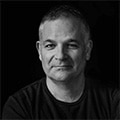Tom Nash’s success as DJ Hookie despite his severe physical disability is deeply inspiring, but it’s not unusual. Throughout recent history, artists, athletes and others have demonstrated that disability does not place limits on human creativity, resourcefulness and achievement.
Hellen Keller provided a revolutionary example over a century ago. Born deaf and blind, she went on to graduate college, and became a world-renowned author. In more recent times,
Stevie Wonder, blind since early childhood, became one of the most revered musicians of his generation.
Frida Kahlo, the celebrated Mexican painter, contracted polio as a child and later suffered serious injuries in a car accident. Partially paralyzed and in constant pain, she continued to create remarkable canvases throughout her life.
The French journalist Jean Dominique Bauby suffered a stroke at 43 and became a victim of “locked-in syndrome.” Completely paralyzed, all he could do was blink one eye – and still, he was able to write a book, The Diving Bell and the Butterfly, later adapted into the stunning film of the same name.
Stephen Hawking became the world’s leading physicist despite being paralyzed and left unable to speak by ALS. U.S. President Franklin D. Roosevelt hid from the American public the fact that he used a wheelchair and led his country out of the Great Depression and through World War II. And in sports, athletes such the runner Marla Runyan, the first legally blind person to compete in the Olympics, and Bethany Hamilton, who continued to surf professionally after losing an arm in a shark attack, redefined the limits of the possible.
These individuals and many others demonstrate the strength of the human spirit in overcoming obstacles – and challenge us to rethink the very definition of disability in the first place.
